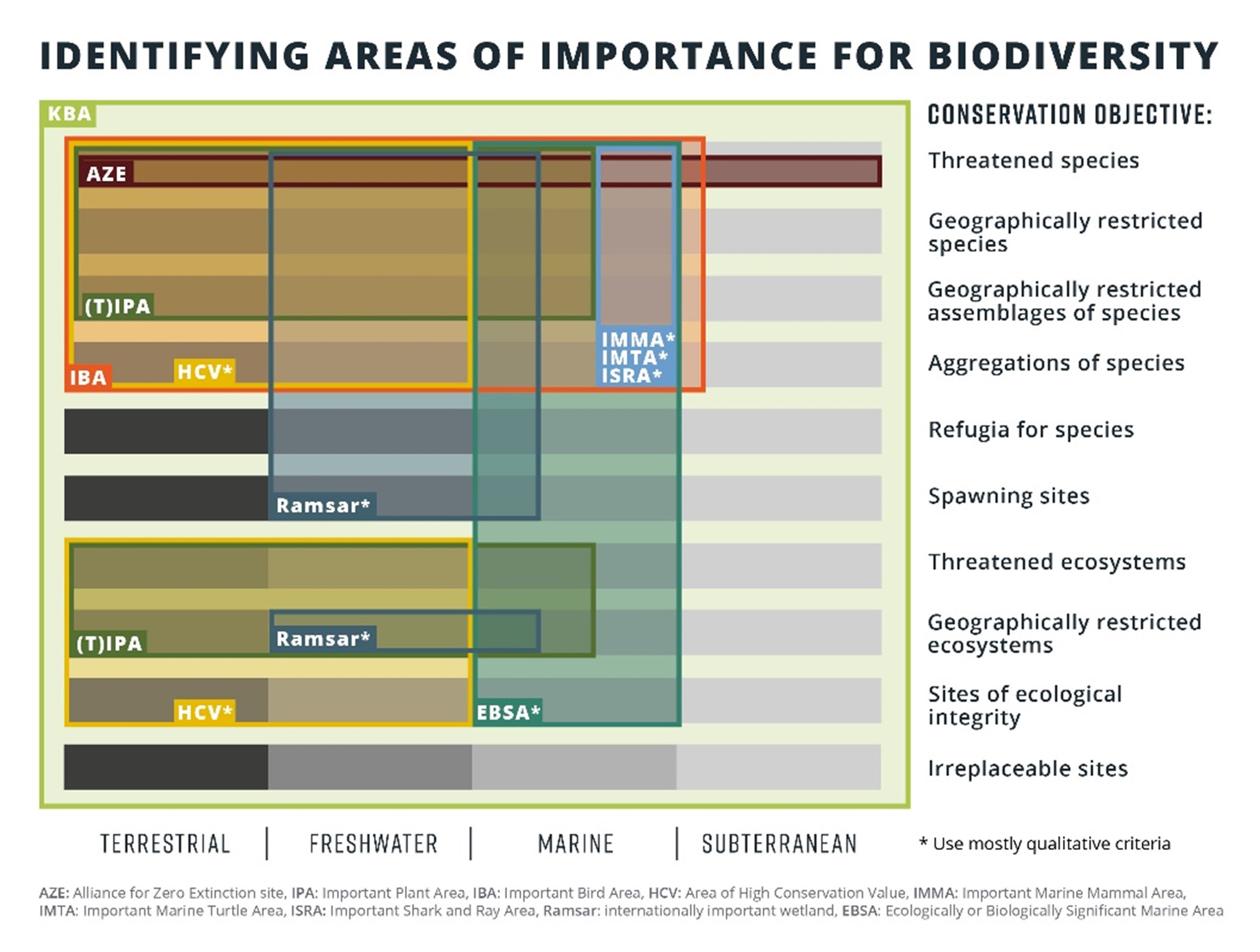Defining 'Areas of Importance for Biodiversity' is Critical for Success of Global Biodiversity Framework.

Comparison of KBA criteria with other approaches for identifying areas of importance for biodiversity. Figure from Plumptre et al., 2024.
The Kunming-Montreal Global Biodiversity Framework targets to halt extinctions, decrease biodiversity loss, and protect 30% of the planet by 2030. Yet, it lacks a clear definition of 'areas of importance for biodiversity', potentially hindering effective conservation. A recent paper in One Earth proposes a definition to enhance KMGBF implementation.
The Kunming-Montreal Global Biodiversity Framework (KMGBF) is a historical milestone towards creating a Nature Positive World, a programme with four ambitious goals and 23 targets. But while the framework highlights the need to focus on protecting ‘areas of particular importance for biodiversity’, it left the way forward unclear because it did not include a definition of these places.
The challenge isn’t new. The previous Aichi Biodiversity Target 11 used the same phrase to guide where protection should occur during 2010-2020. It successfully promoted a large rise in protected areas targeting 17% of land and 10% of seas, but in the absence of adequate guidance, countries tended to protect sites that were more remote from people and that were less suitable for agriculture rather than those that are important for biodiversity. With the world facing a worsening nature crisis and with only seven years to go to achieve the KMGBF goals and targets, we cannot afford to make the same mistake again. We need to agree on a definition now for ‘areas of particular importance for biodiversity’ for countries to use.
A recent paper in One Earth proposes a definition that could strengthen the implementation of the KMGBF if all countries apply it. The definition, builds on quantitative criteria used to identify Key Biodiversity Areas (KBAs), proposing sites that contain significant populations/extents of threatened or geographically restricted species or ecosystems, have significant ecological integrity or irreplaceability, are significant for the maintenance of biological processes, or provide significant ecological connectivity to maintain KBA viability. The authors argue that this definition, if implemented, would go a long way to halting extinction and reducing biodiversity loss, a key component of Goal A of the KMGBF.
In the paper, the authors review the various approaches used to identify areas important for biodiversity. They highlight that many of these approaches are narrowly focused on specific taxonomic groups and rely on qualitative data in their criteria. For instance, ‘areas containing a significant proportion of the population of a species’ or the ‘five best sites’. The use of qualitative criteria makes it challenging to standardize an approach, and the results depend on the individuals involved in the decision-making process. The authors argue that while quantitative criteria can be more challenging to apply, they offer the advantage of verifiability allowing for comparisons between sites, countries, and regions of the world, and are more transparent and repeatable. They assert that the criteria used to identify Key Biodiversity Areas (KBAs) are the most comprehensive for identifying areas of importance for biodiversity, as they have quantitative thresholds to ensure transparent, objective, and repeatable site identification. The data on KBAs are also freely available to governments and the conservation community through the World Database of KBAs, making them a useful and accessible tool.
While KBAs capture some aspects of ecological connectivity, the authors acknowledge that more research is needed to better understand and incorporate this factor in the definition of 'areas of importance for biodiversity'. Assessing the globally significant populations and ecosystems in KBAs that need to be connected to maintain viability is one way KBAs can be used to prioritize where connectivity needs to be maintained or enhanced.
With only 7 years remaining for the implementation of the KMGBF, it is crucial that countries start identifying important areas for biodiversity conservation. Adopting the proposed definition in the paper, which borrows from the KBA approach, could help ensure that all conservation objectives are met and contribute to halting extinction and reducing biodiversity loss.